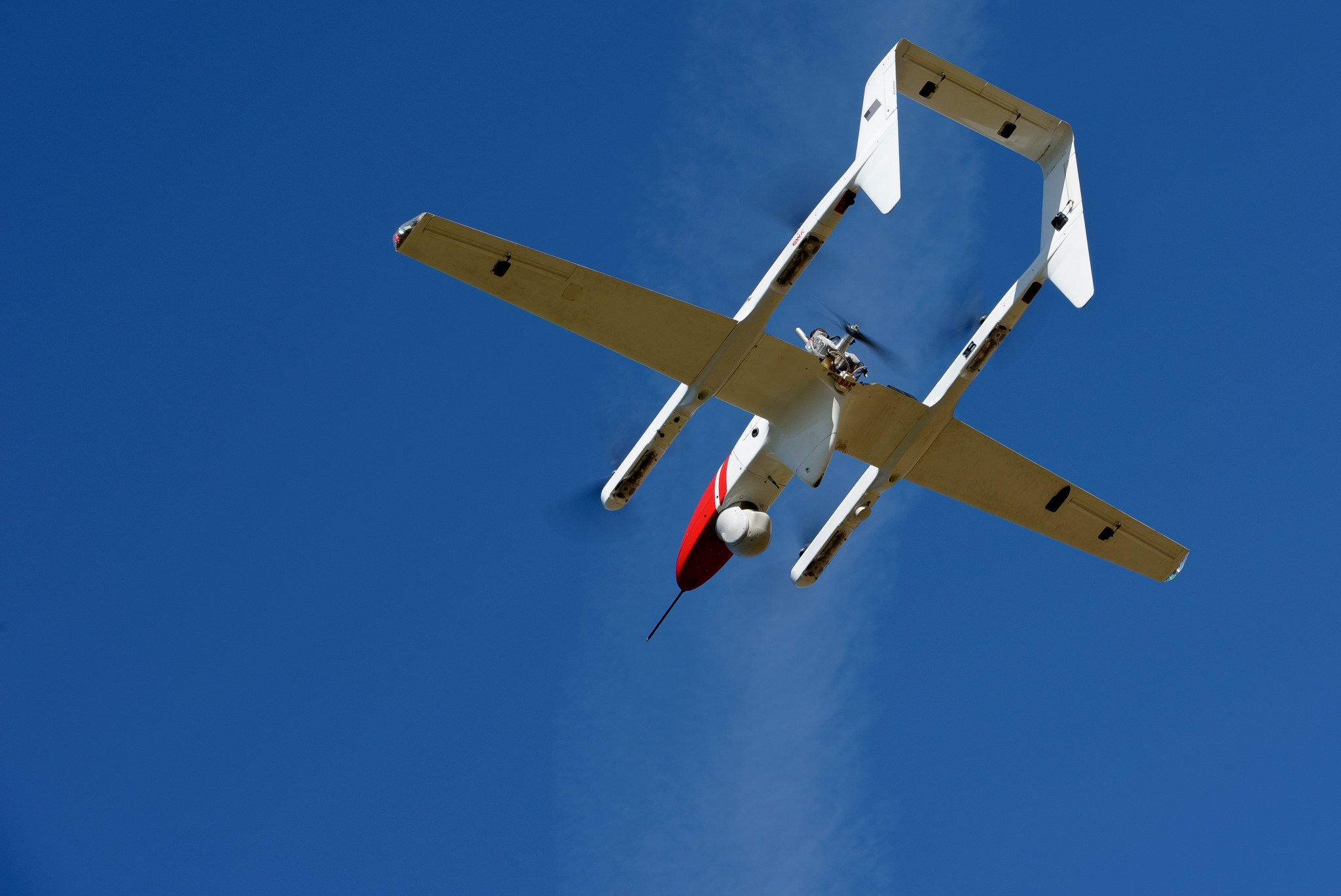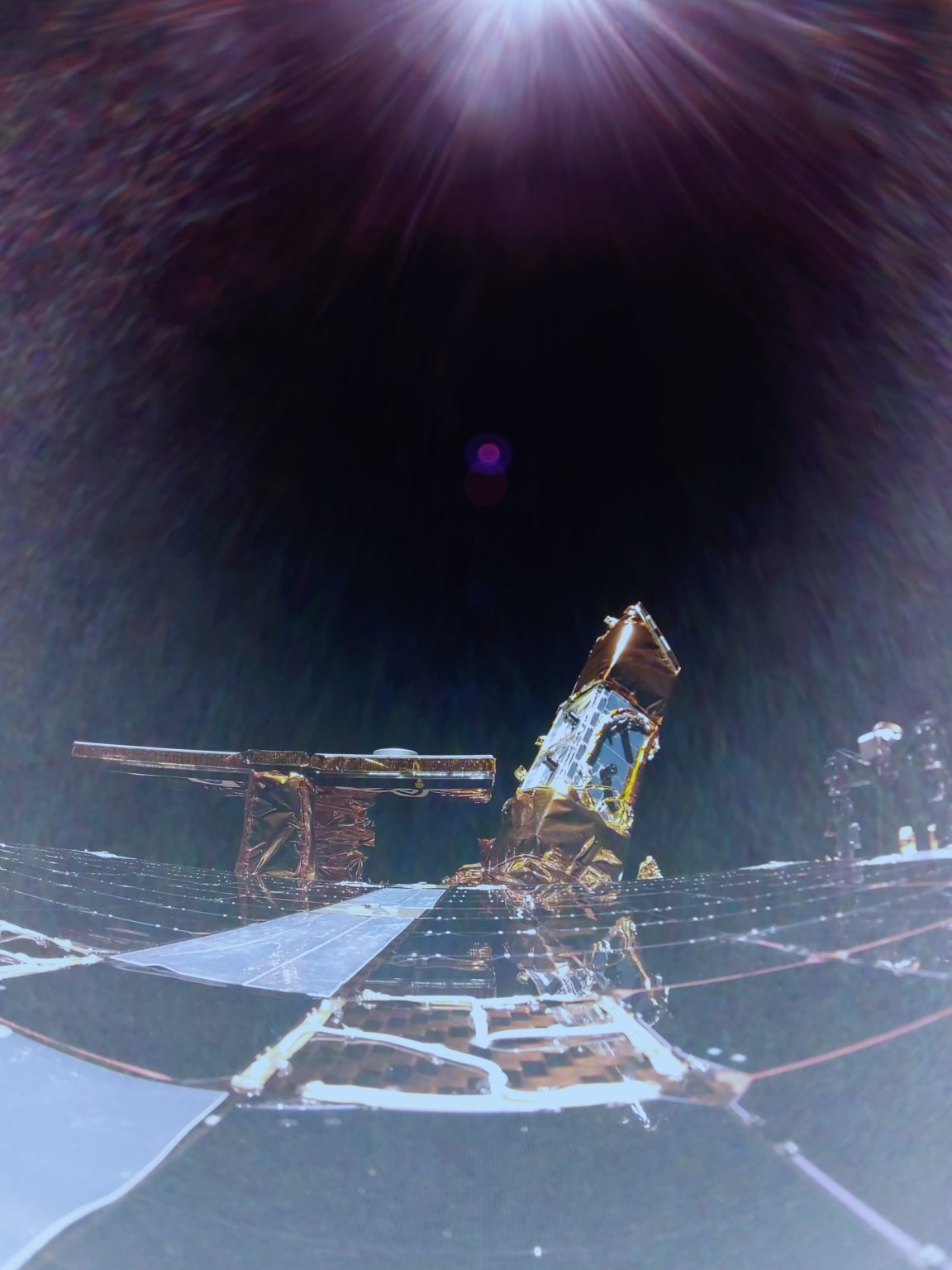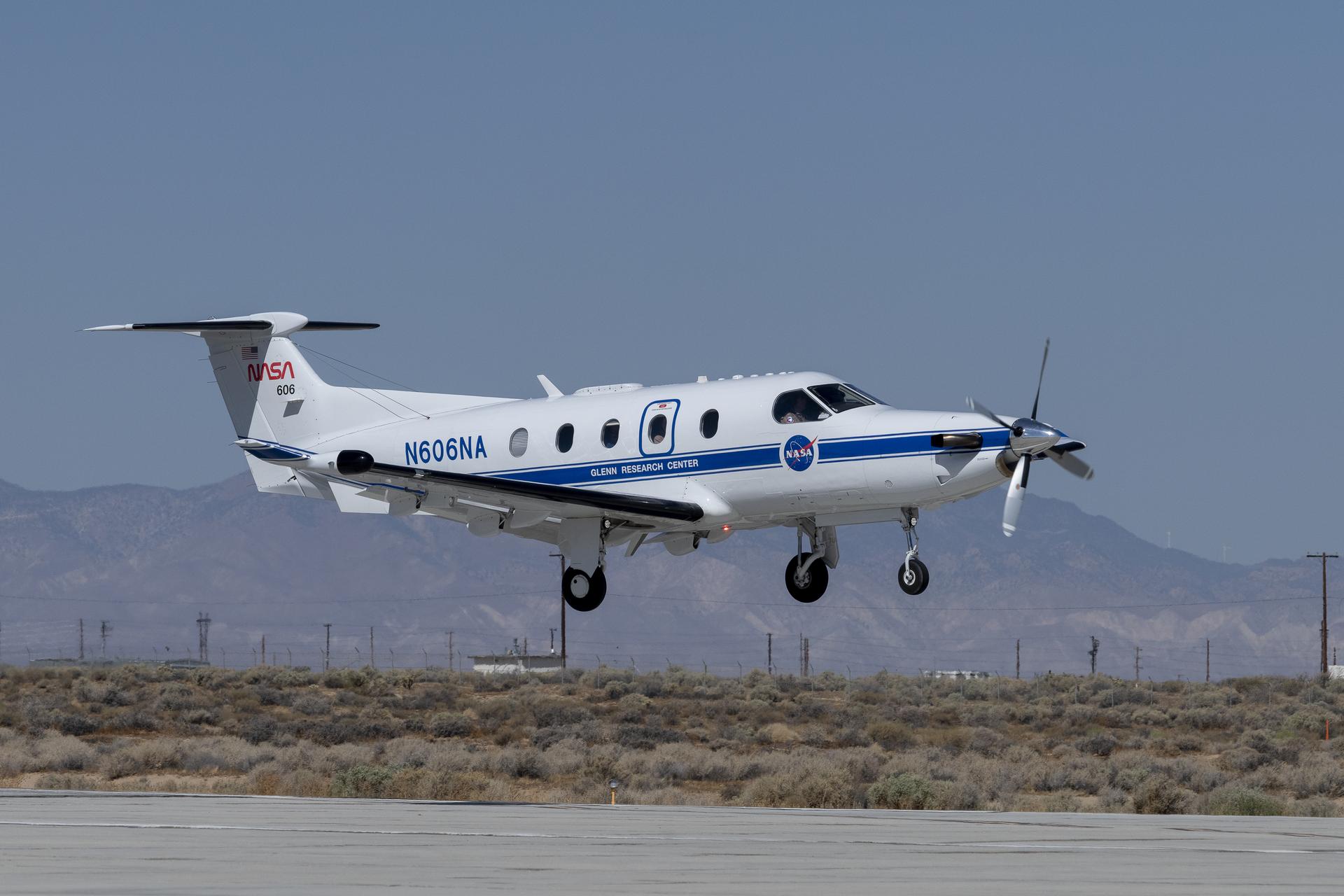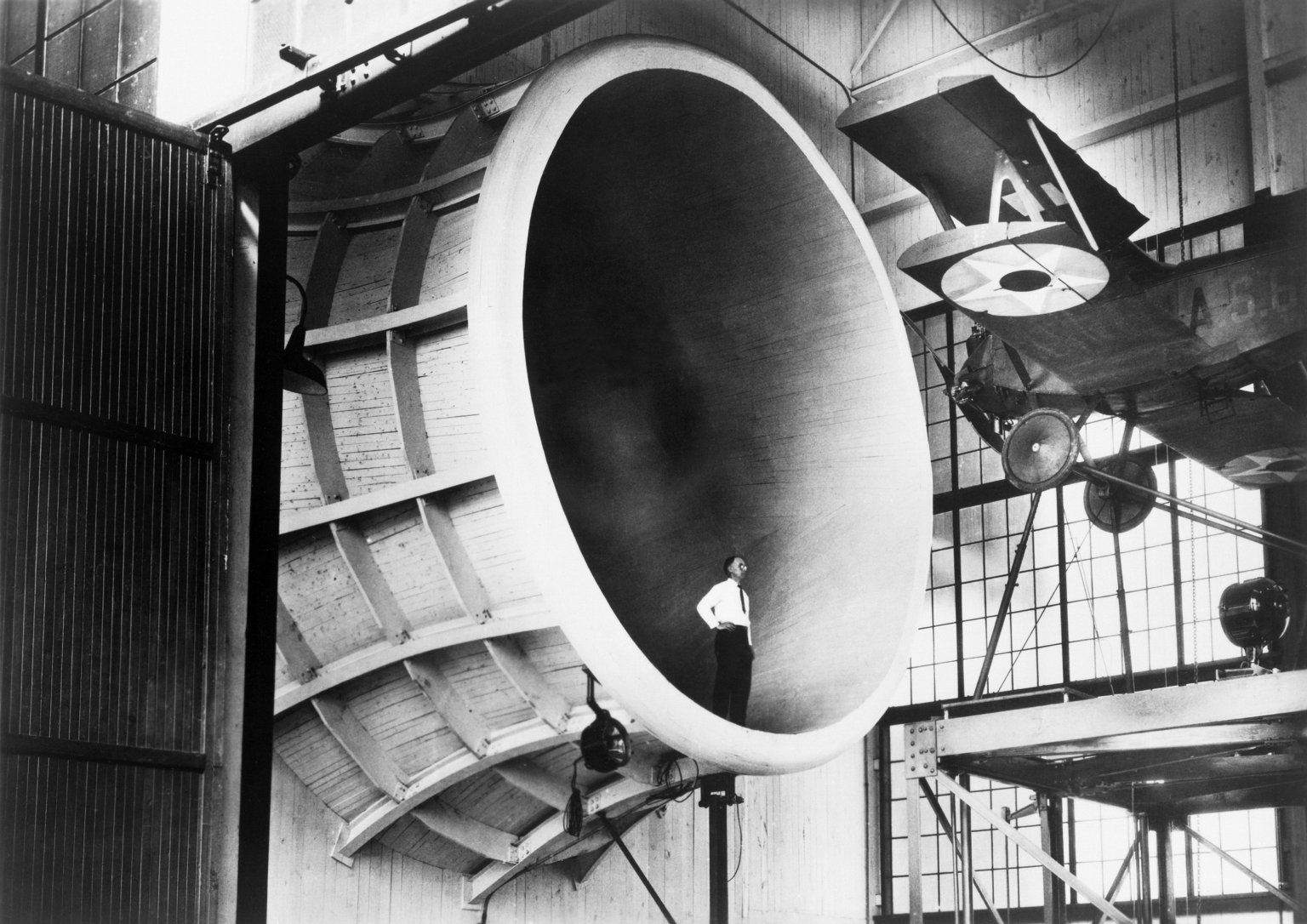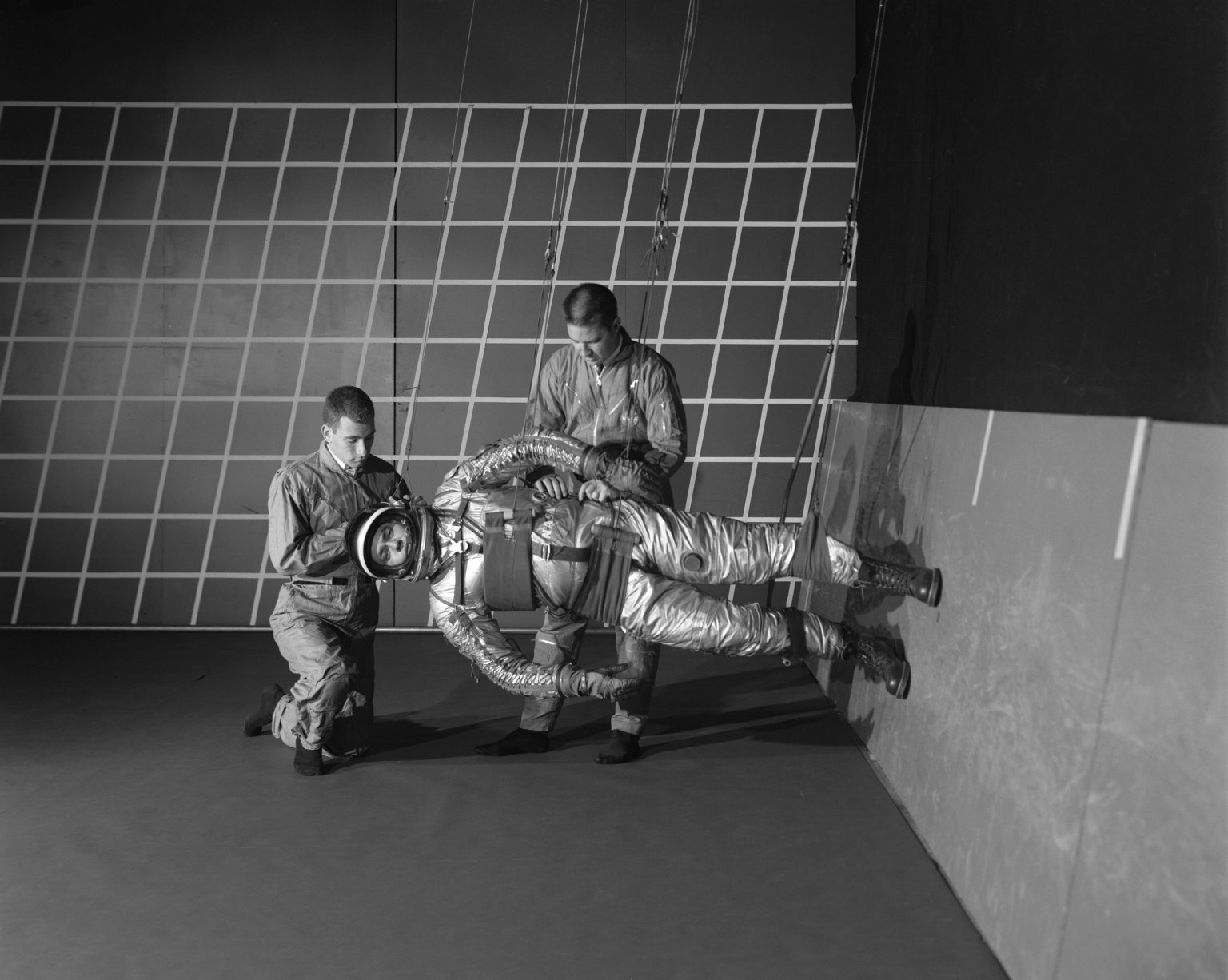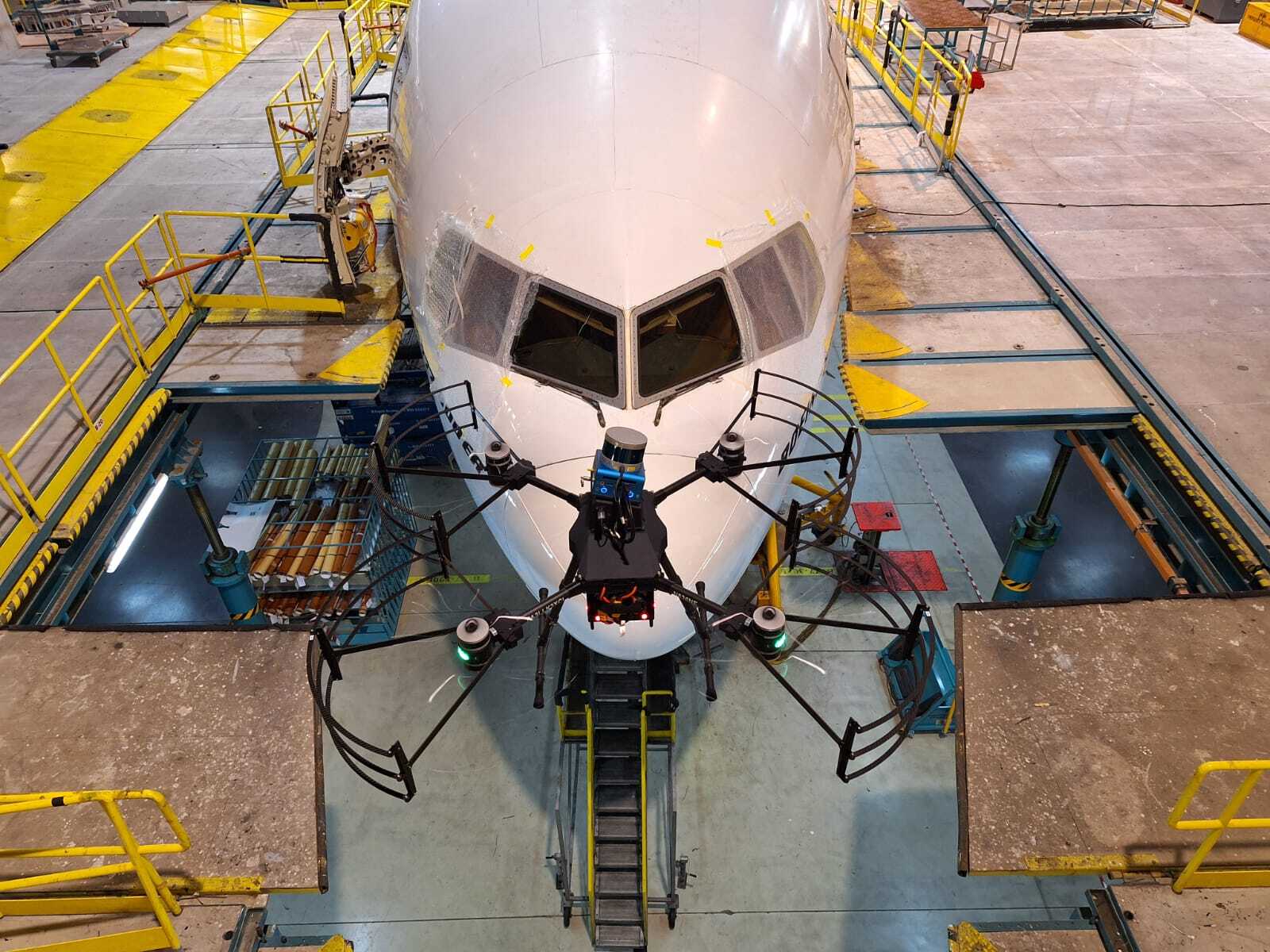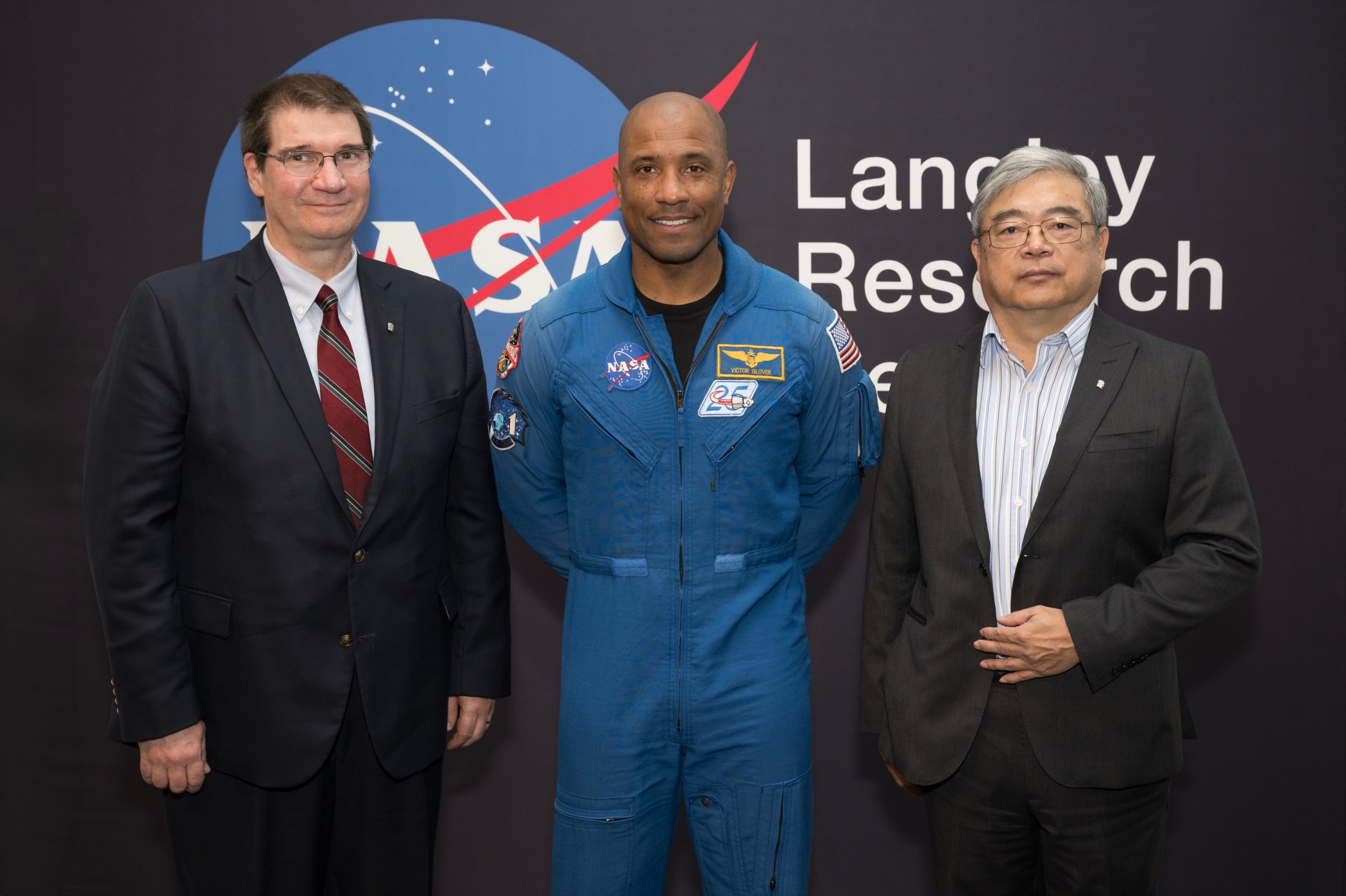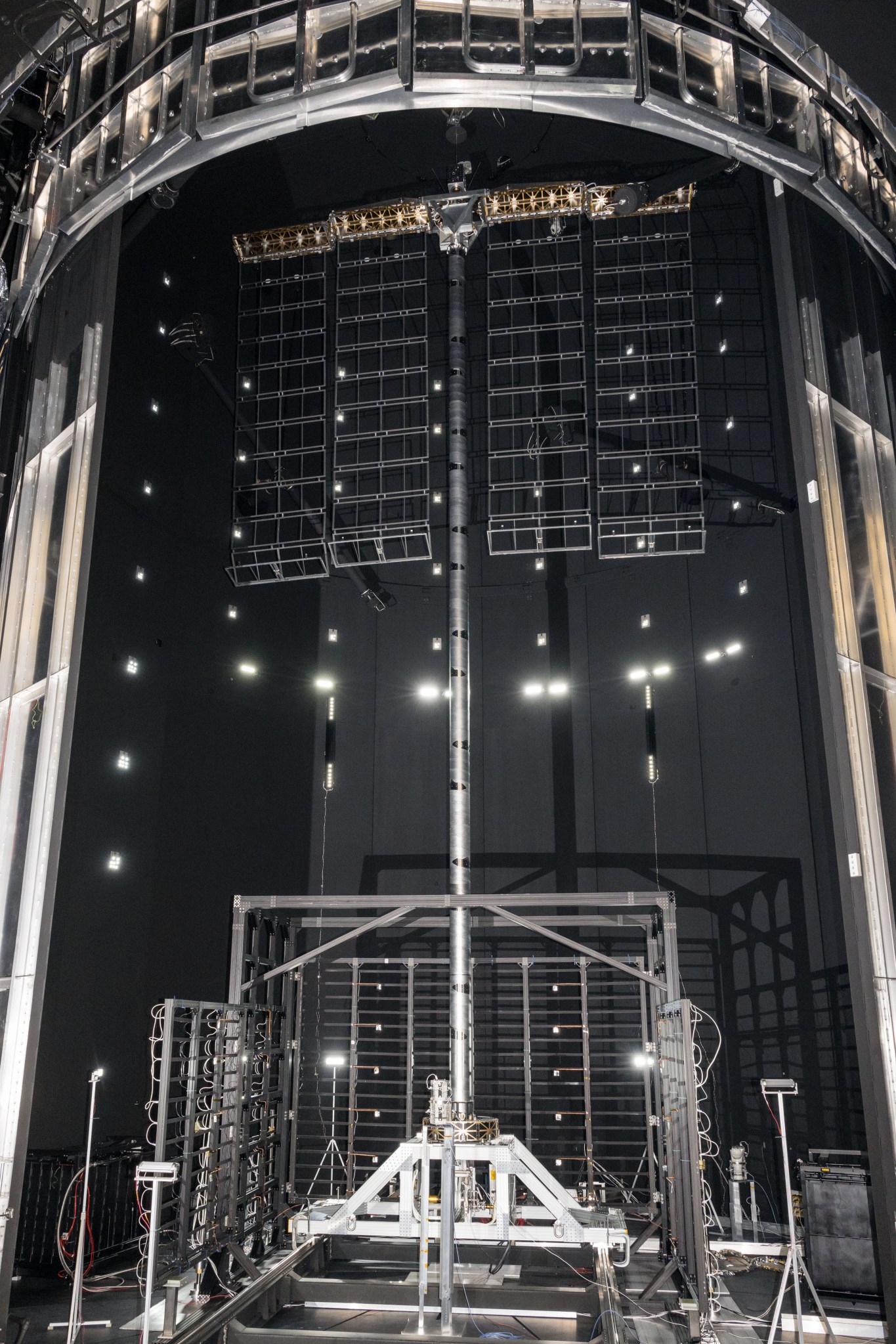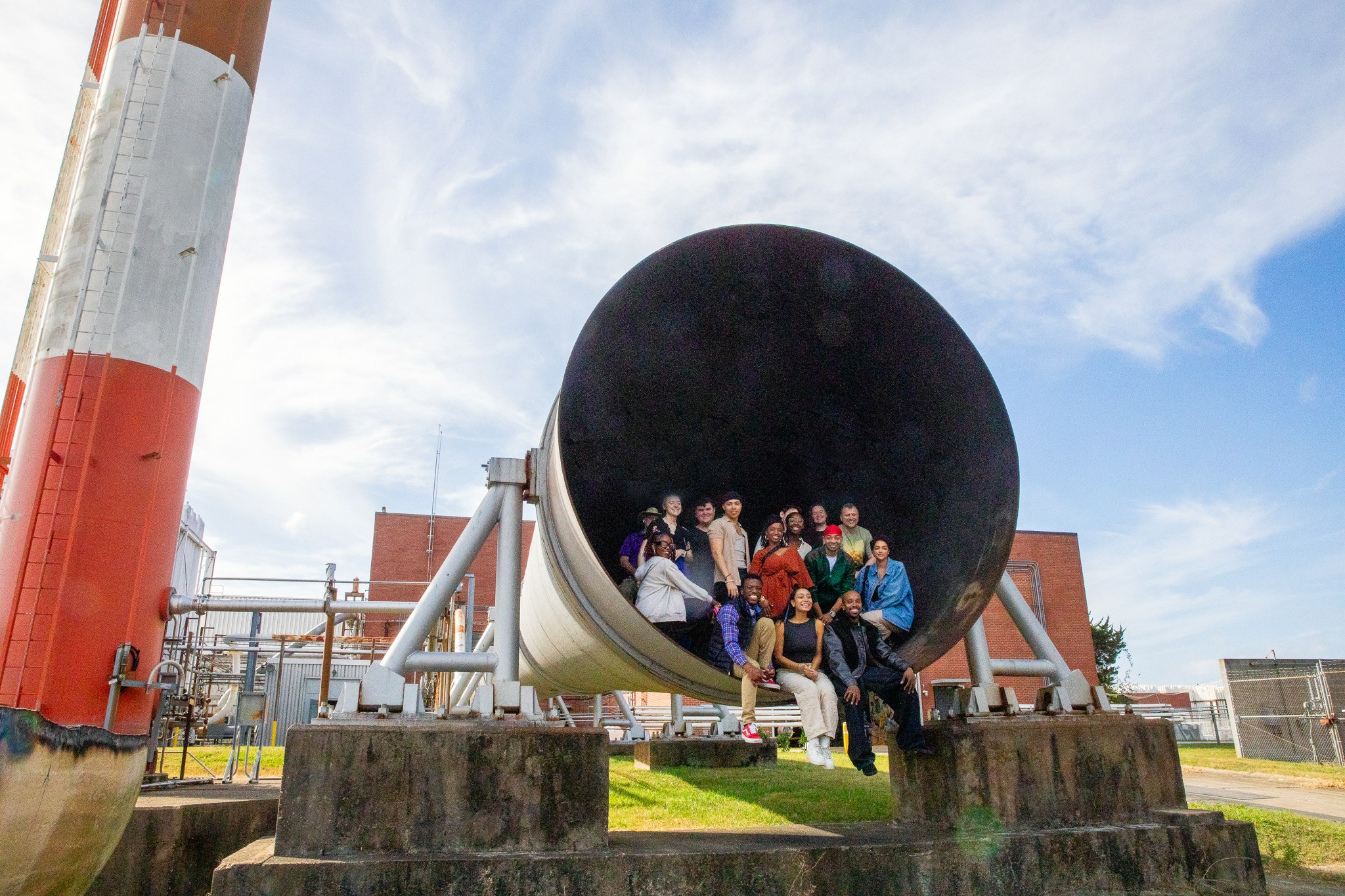An FVR90 unmanned aerial vehicle (UAV) lifts off from the Monterey Bay Academy Airport near Watsonville, California, during the Advanced Capabilities for Emergency Response Operations (ACERO) Shakedown Test in November 2024. NASA/Don Richey NASA is collaborating with the wildfire community to provide tools for some of the most challenging aspects of firefighting – particularly aerial nighttime operations. In the future, agencies could more efficiently use drones, both remotely piloted and fully autonomous, to help fight wildfires. NASA recently tested technologies with teams across the country that will enable aircraft –…
Read MoreTag: Langley Research Center
NASA Space Tech’s Favorite Place to Travel in 2025: The Moon!
4 Min Read NASA Space Tech’s Favorite Place to Travel in 2025: The Moon! The first image from space of Firefly's Blue Ghost mission 1 lunar lander as it begins its 45-day transit period to the Moon. Credits: Firefly Aerospace NASA Space Technology has big travel plans for 2025, starting with a trip to the near side of the Moon! Among ten groundbreaking NASA science and technology demonstrations, two technologies are on a ride to survey lunar regolith – also known as “Moon dust” – to better understand surface interactions…
Read MoreNASA Tests Air Traffic Surveillance Technology Using Its Pilatus PC-12 Aircraft
3 min read Preparations for Next Moonwalk Simulations Underway (and Underwater) Equipped with state-of-the-art technology to test and evaluate communication, navigation, and surveillance systems NASA’s Pilatus PC-12 performs touch-and-go maneuvers over a runway at NASA’s Armstrong Flight Research Center in Edwards, California on Sept. 23, 2024. Researchers will use the data to understand Automatic Dependent Surveillance-Broadcast (ADS-B) signal loss scenarios for air taxi flights in urban areas. To prepare for ADS-B test flights pilots and crew from NASA Armstrong and NASA’s Glenn Research Center in Cleveland, ran a series of…
Read MoreLangley’s Propeller Research Tunnel
NASA Elton W. Miller, chief of aerodynamics at what is now NASA’s Langley Research Center in Hampton, Virginia, stands in the entrance cone of the Propeller Research Tunnel in this Sept. 9, 1926, photo. In front of the entrance is the Sperry M-1 Messenger, the first full-scale airplane tested in the tunnel. The Propeller Research Tunnel, or PRT as it came to be known, was only the National Advisory Committee for Aeronautics’ third wind tunnel and the largest one built. The PRT was in fact the largest tunnel built at…
Read MoreDefying Gravity
NASA In this Dec. 11, 1963, image, technicians prepare a test subject for studies on the Reduced Gravity Walking Simulator at NASA’s Langley Research Center in Hampton, Virginia. This position meant that a person’s legs experienced only one sixth of their weight, which was the equivalent of being on the Moon’s surface. The simulator was used to study the subject while walking, jumping, or running; it also was used to train Apollo astronauts for completing tasks in the unfamiliar lunar environment. The effect was quite realistic. When asked what it…
Read MoreNASA Small Business Funding Enables Aircraft Inspection by Drone
3 min read Preparations for Next Moonwalk Simulations Underway (and Underwater) A Boeing 777-300ER aircraft is being inspected by one of Near Earth Autonomy’s drones Feb. 2, 2024, at an Emirates Airlines facility in Dubai, United Arab Emirates. Near Earth Autonomy A small business called Near Earth Autonomy developed a time-saving solution using drones for pre-flight checks of commercial airliners through a NASA Small Business Innovation Research (SBIR) program and a partnership with The Boeing Company. Before commercial airliners are deemed safe to fly before each trip, a pre-flight inspection…
Read MoreNASA Langley Employees Earn Silver Snoopy Awards
From left to right, Dr. Peter Parker, Astronaut Victor Glover and Dr. Shih-Yung Lin pose for a photo after the 2024 Silver Snoopy Awards ceremony. NASA/Mark Knopp Two employees from NASA’s Langley Research Center in Hampton, Virginia recently earned the prestigious Silver Snoopy award, an honor given to NASA employees and contractors across the agency for outstanding achievements related to astronaut safety or mission success. Dr. Shih-Yung Lin and Dr. Peter Parker received the awards during a Space Flight Awareness (SFA) award ceremony at Langley on Nov. 21. Lin earned…
Read MoreFrom Houston to the Moon: Johnson’s Thermal Vacuum Chamber Tests Lunar Solar Technology
Imagine designing technology that can survive on the Moon for up to a decade, providing a continuous energy supply. NASA selected three companies to develop such systems, aimed at providing a power source at the Moon’s South Pole for Artemis missions. Three companies were awarded contracts in 2022 with plans to test their self-sustaining solar arrays at the Johnson Space Center’s Space Environment Simulation Laboratory (SESL) in Houston, specifically in Chamber A in building 32. The prototypes tested to date have undergone rigorous evaluations to ensure the technology can withstand…
Read MoreThe Cast and Crew of “Ain’t Too Proud” Visit NASA Langley
1 min read Preparations for Next Moonwalk Simulations Underway (and Underwater) Members of the cast and crew of “Ain’t Too Proud – The Life and Times of the Temptations” pose for a photo inside of the 8-foot high-temperature tunnel at NASA’s Langley Research Center in Hampton, Virginia. NASA/David C. Bowman Get Ready! Members of the cast and crew of the Broadway national touring production of “Ain’t Too Proud – The Life and Times of The Temptations,” visited NASA’s Langley Research Center in Hampton, Virginia on Nov. 6, where they learned…
Read MoreSail Along with NASA’s Solar Sail Tech Demo in Real-Time Simulation
Unable to render the provided source NASA invites the public to virtually sail along with the Advanced Composite Solar Sail System‘s space journey using NASA’s “Eyes on the Solar System” visualization tool, a digital model of the solar system. This simulation shows the real-time positions of the planets, moons, and spacecraft – including NASA’s Advanced Composite Solar Sail System. Solar sails use the pressure of sunlight for propulsion, angling toward or away from the Sun so that photons bounce off the reflective sail to push a spacecraft. This eliminates the need for heavy…
Read More